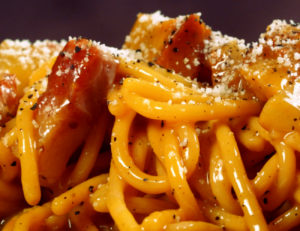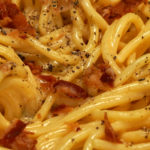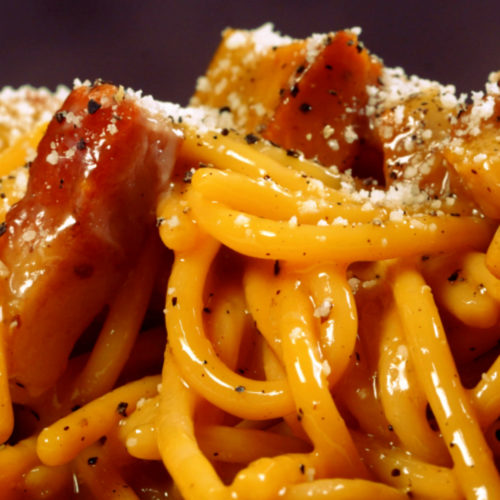The LEGENDARY authentic Spaghetti Carbonara recipe just got better! Keep reading to learn how to make creamy Spaghetti Carbonara the Roman way— no onions, no peas, no heavy cream. Learn how to make Spaghetti Carbonara as they do in the best Italian restaurants in Rome, Italy. However in this extra creamy Spaghetti Carbonara recipe, we show how to pasteurize the eggs at home. It’s a cooked carbonara sauce (no raw eggs) that does not deviate from the traditional Roman recipe. To recap:
- authentic Roman recipe
- cooked egg sauce (no raw eggs)
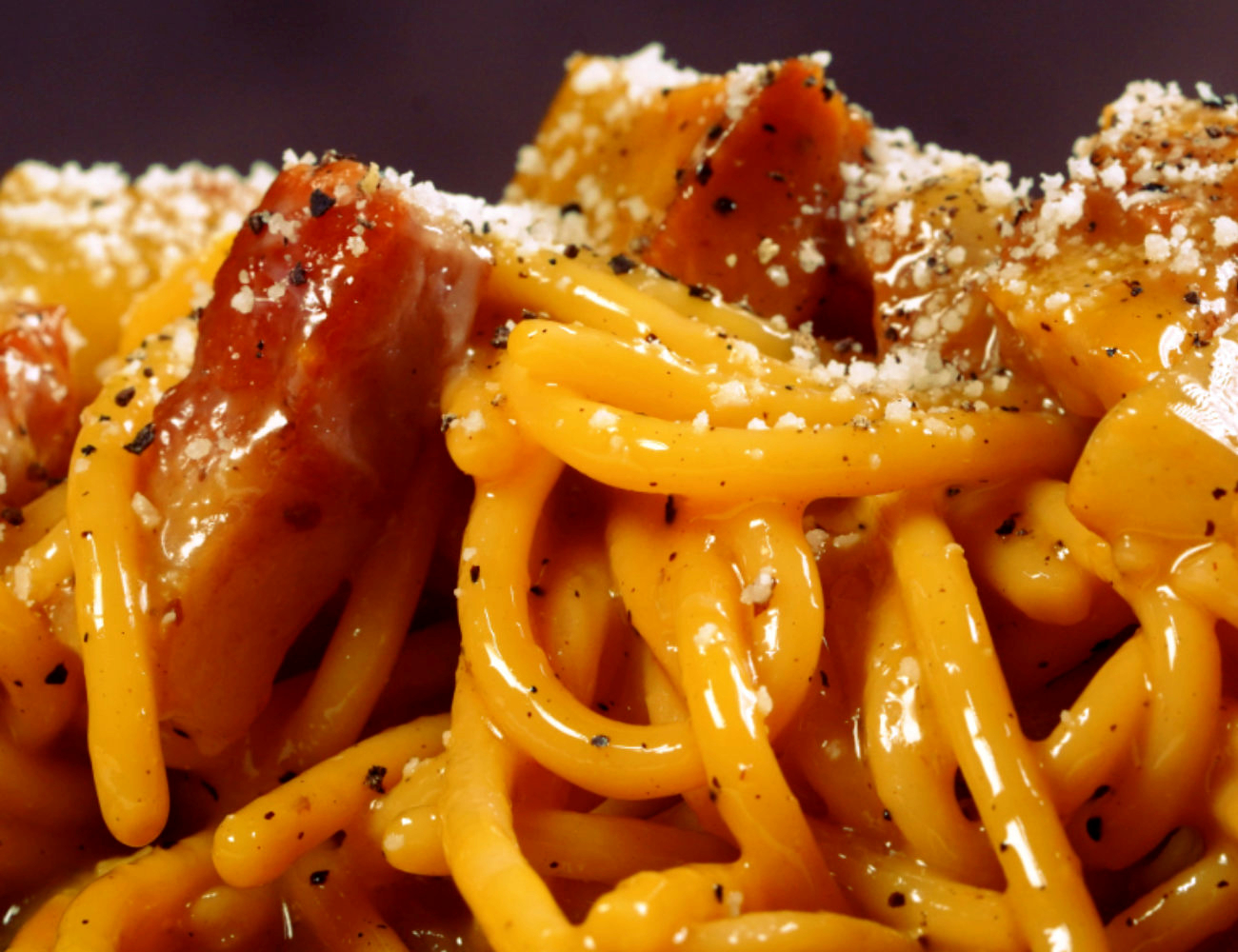
Prefer a Spaghetti Carbonara with Cream and Bacon? You are looking for the WWII Spaghetti Carbonara recipe! This ‘American-style’ Carbonara is in fact one of the origin stories for Carbonara, and we have re-created the recipe for you using the memoirs of the Italian Chef who said he invented it!
Watch the Video Recipe!
If you prefer to watch a video recipe, click on the video below.
Subscribe to our YouTube Channel
More video recipes? Subscribe to our YouTube Channel (it’s FREE) and click the bell to get notifications when we release a new video recipe!
In Italian? Spaghetti Carbonara Ricetta
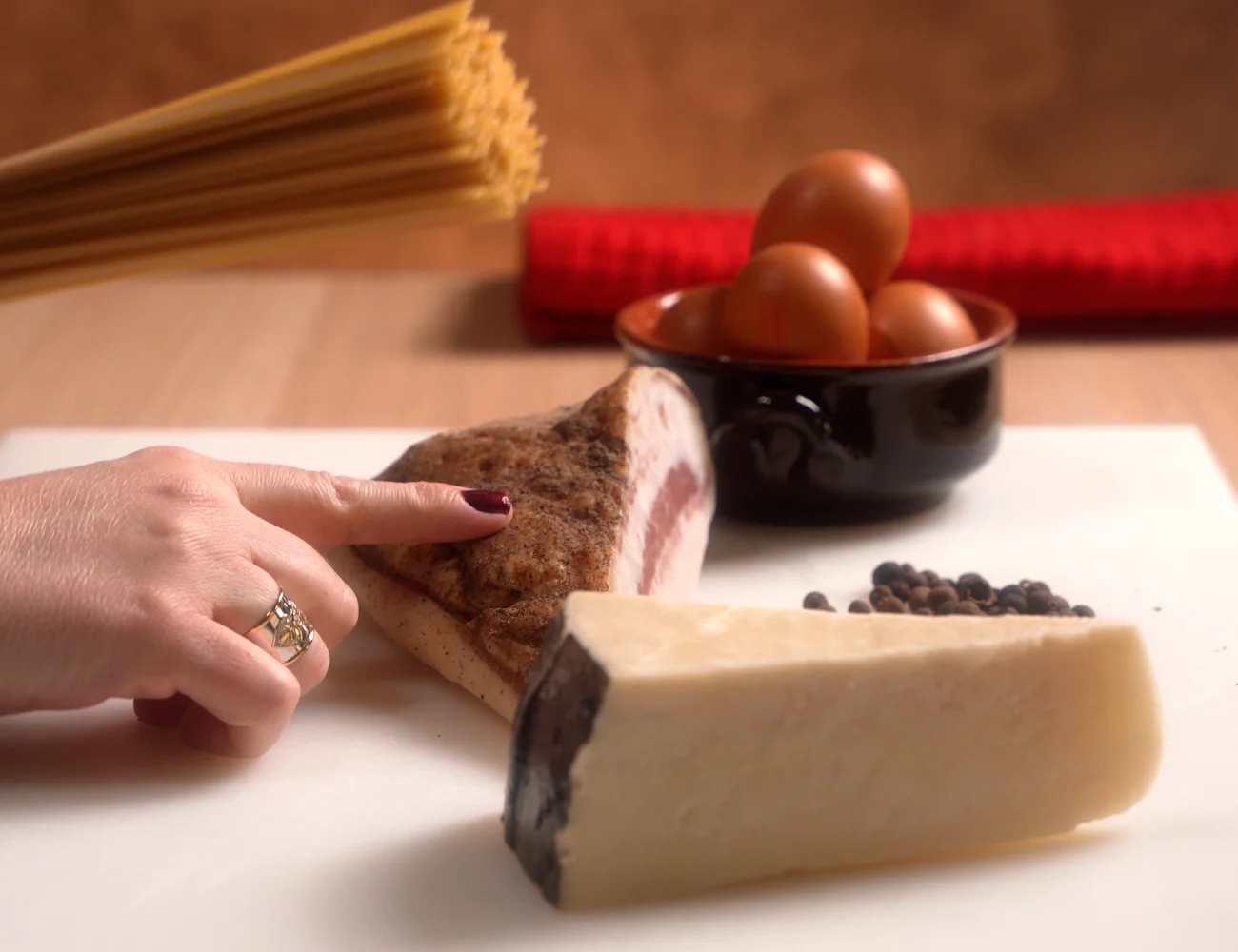

How to Make Creamy Spaghetti Carbonara
This Pasta Carbonara recipe (called “Pasta alla Carbonara” or Spaghetti alla Carbonara in Italy) is made using traditional ingredients in the most Italian way. It’s a fast and easy dish with just a few simple ingredients—ready in the time it takes to cook the pasta!
What are these ingredients?
- black pepper (ideally, toasted and ground fresh)
- pecorino romano cheese (very finely grated)
- guanciale (cured pork cheek)
- egg yolks
- spaghetti
- salt (a bit for the pasta water)
Let’s take a look at these ingredients one by one!
Black Pepper (Toasted)
In a traditional Roman Carbonara, the black pepper needs to come through. Traditionally, it is toasted to bring out its best flavor and then ground. Or, you can ground it (medium coarsely) and then toast it in a dry pan.
Toasting Ground Pepper
It’s fine to add already ground pepper to a dry pan and toast it over low heat until you smell it. However, be sure to use a medium-coarse grind on your pepper mill. Toasting finely ground pepper runs the risk of quickly creating pepper gas—which is not good for your lungs.
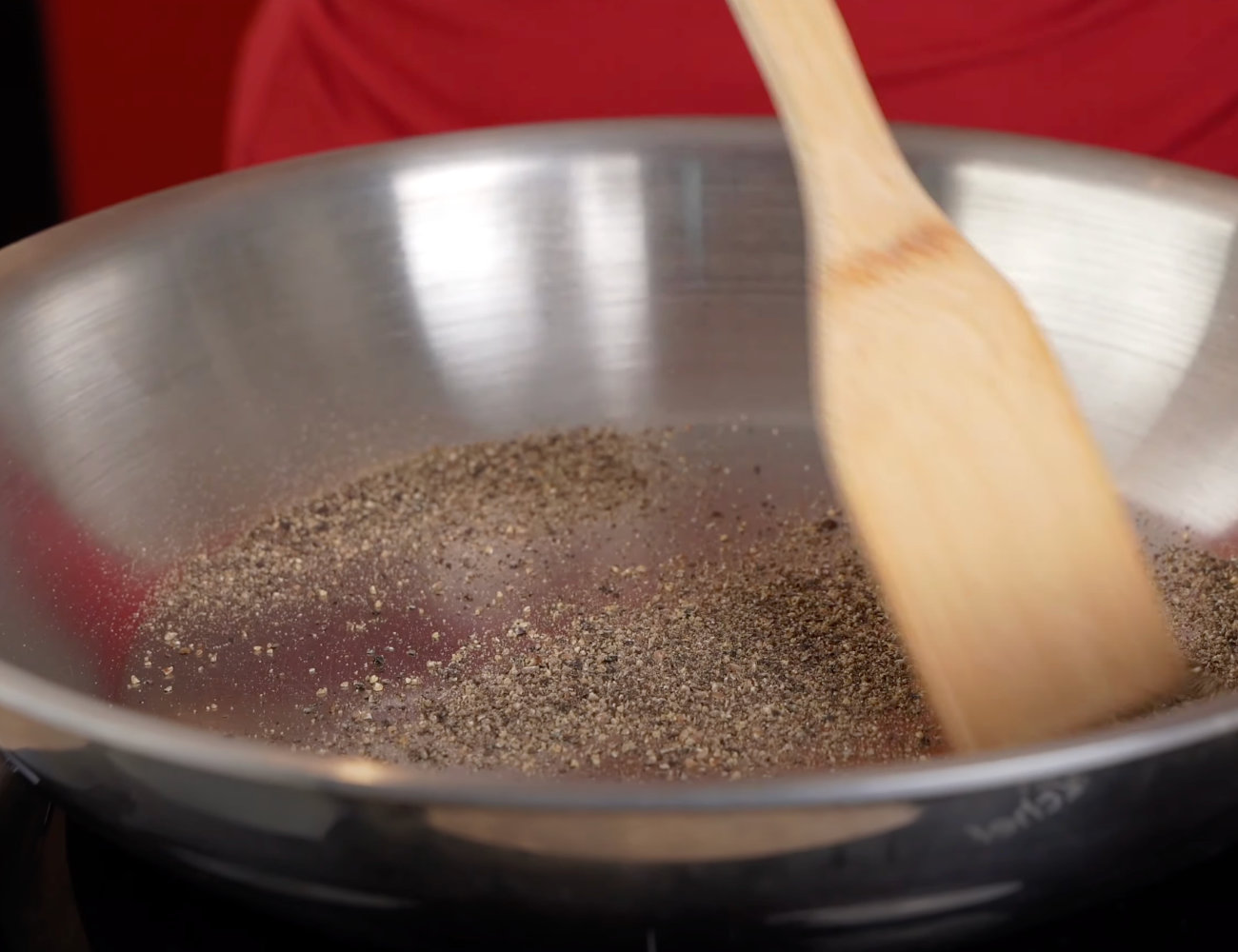

Toasting Whole Pepper, Then Grinding It
If you are new to toasting pepper, you can also toast the peppercorns whole in a dry pan. This buys you a little leeway in toasting, letting you avoid the risk of creating pepper gas. Once you smell the toasting pepper, remove it from the heat and grind it with a mill or marble mortar and pestle.
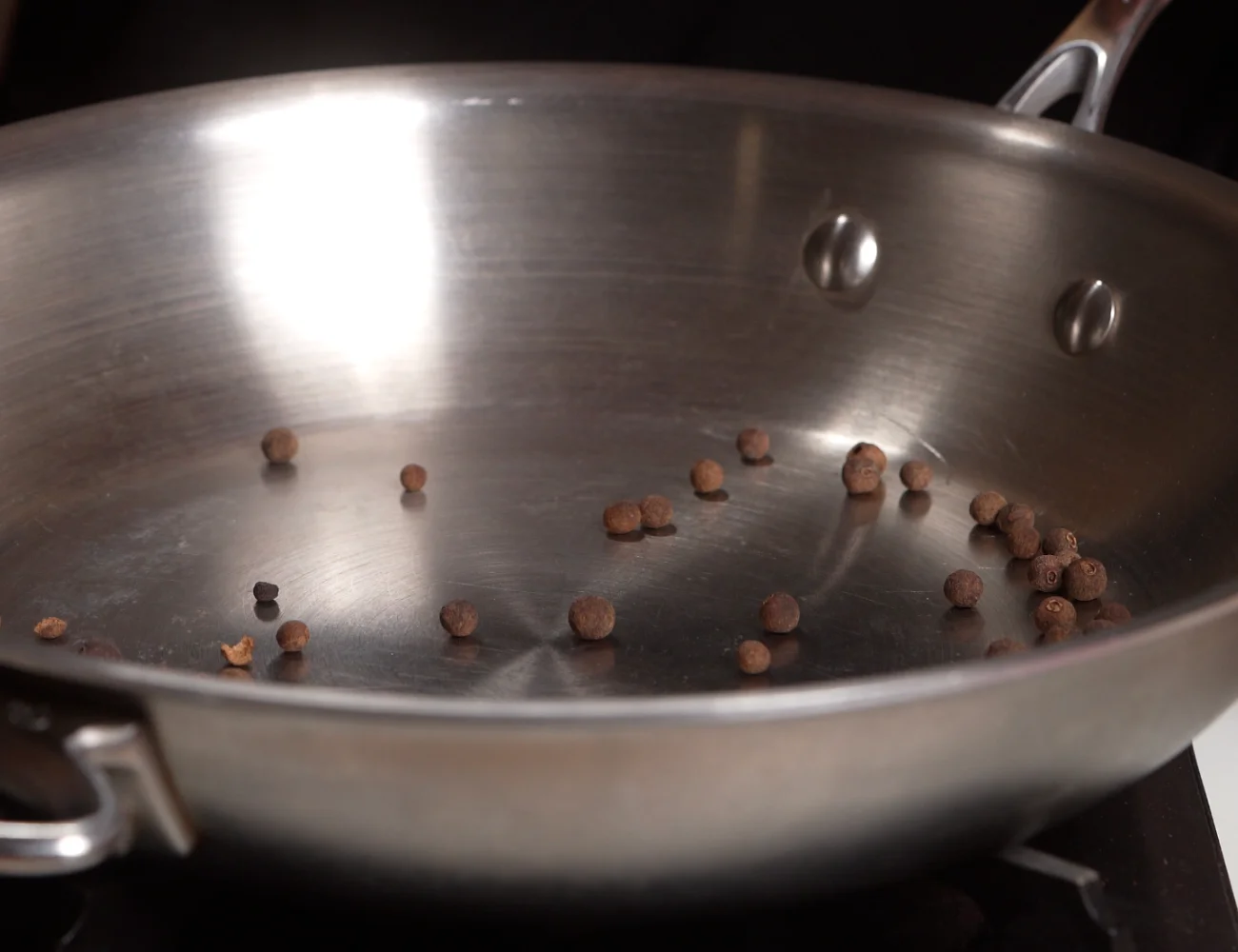

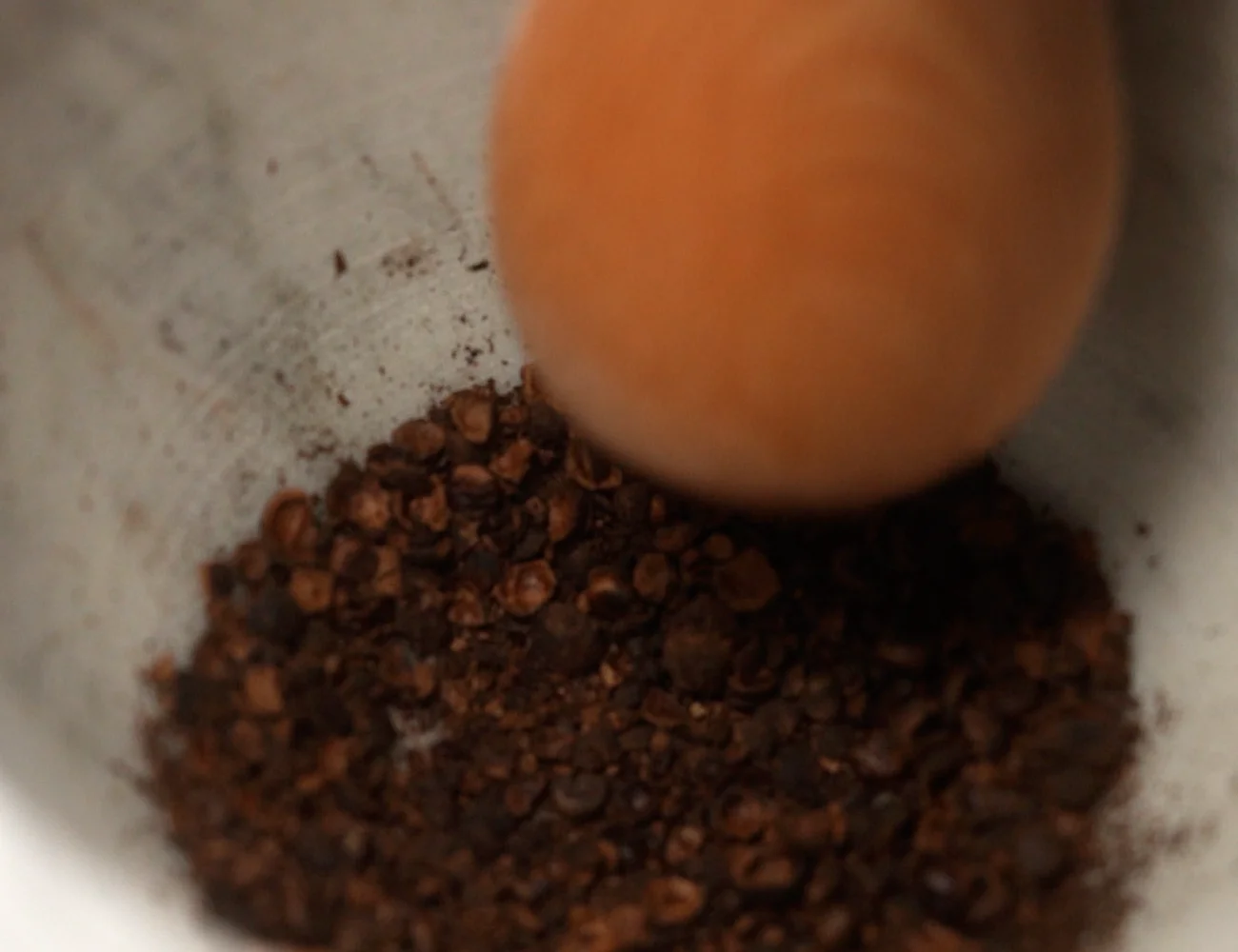

Pecorino Romano Cheese
The traditional Spaghetti Carbonara recipe is made with pecorino cheese — not Parmigiano, ‘parmesan’ or a mix of pecorino and other cheeses. There is really no leeway here if you want to avoid offending Roman (or Italian) sensibilities.
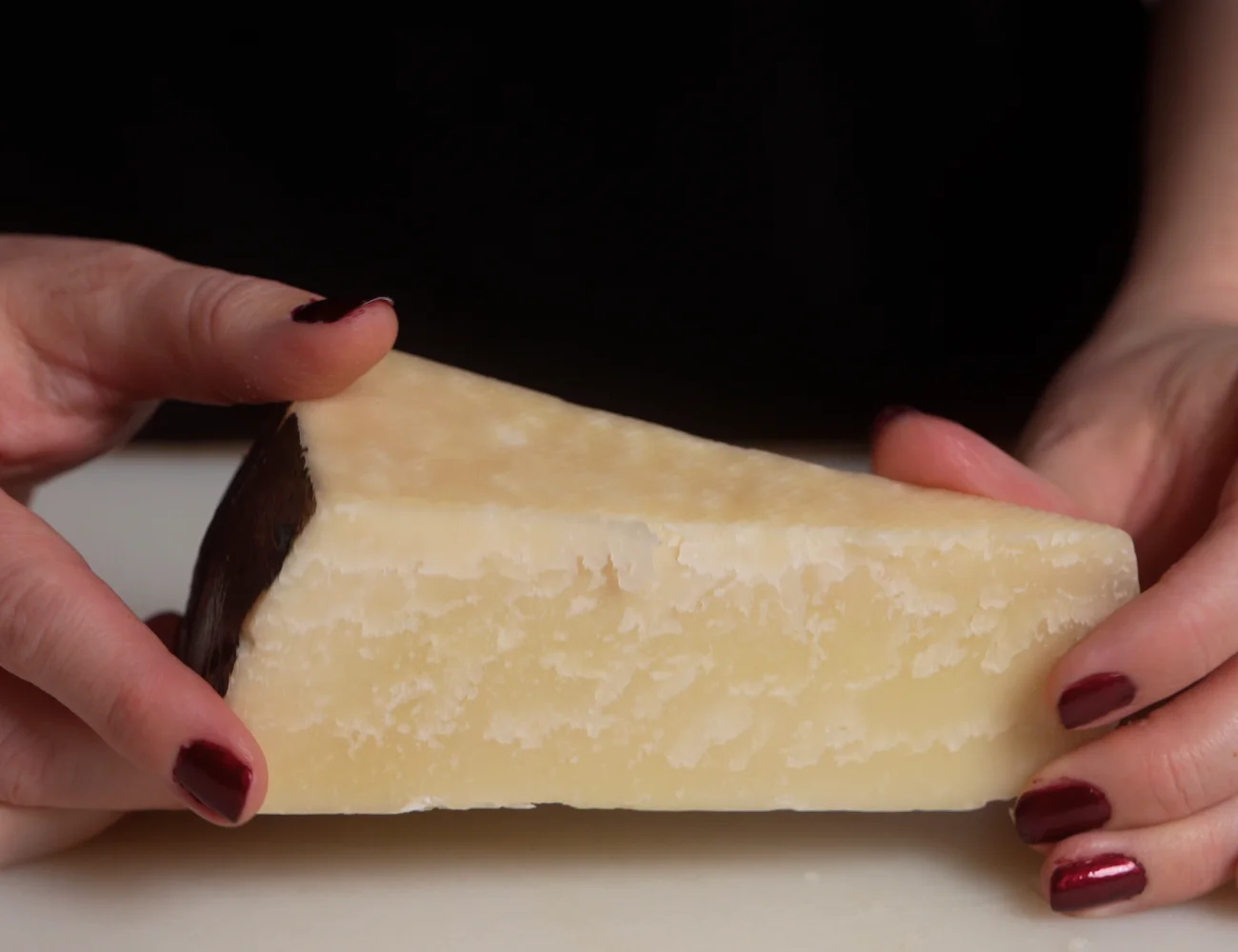

Ideally, choose ‘semi-aged’ Pecorino Romano if you can find it. Semi-aged cheeses always melt just a bit better. However, here we have super creamy carbonara egg sauce, and so whatever Pecorino Romano you can find should be just fine.
However, be sure the Pecorino Romano cheese is very finely grated. The powdery pecorino you can often find in the supermarket (already ground) is perfect. If you are grinding it fresh at home (which always delivers the best flavor), it’s fine to use a fine grater setting on a food processor. However, we always pass even this pecorino through a strainer to make it even finer. Finely ground cheese = extra creamy spaghetti carbonara sauce!
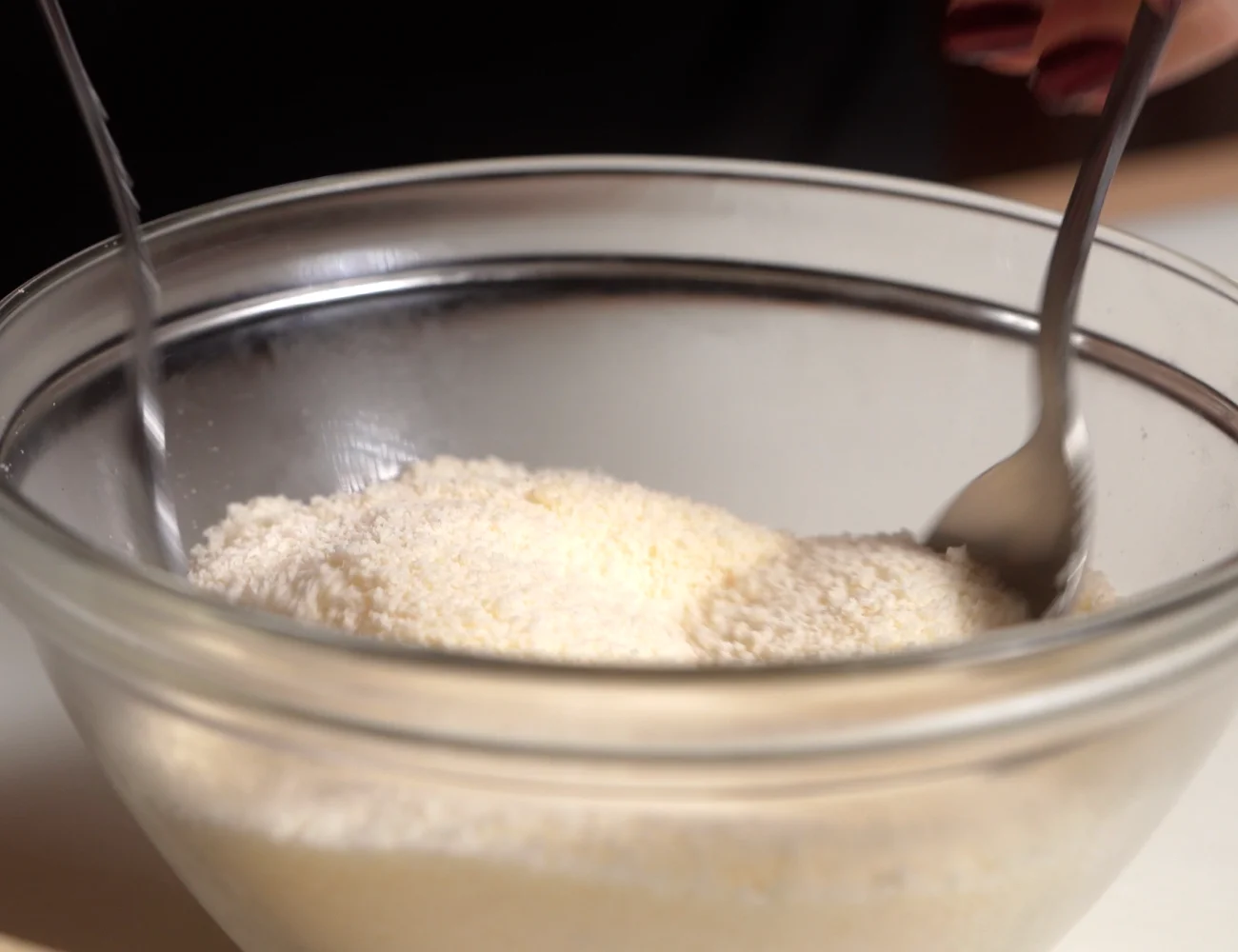

Guanciale (Cured Pork Cheek)
Many outside Italy erroneously think that Carbonara is made with pancetta (cured pork belly) or bacon (smoked pork belly). There was a time when either pancetta or guanciale was considered acceptable in Italy, but these days really guanciale is considered traditional for this dish.
Aren’t pancetta and guanciale the same thing? Nope. Again guanciale is pork cheek and pancetta is pork belly. The amount of fat and flavor the two products have are quite different. Guanciale in fact delivers more fat which we want in our creamy Spaghetti Carbonara.
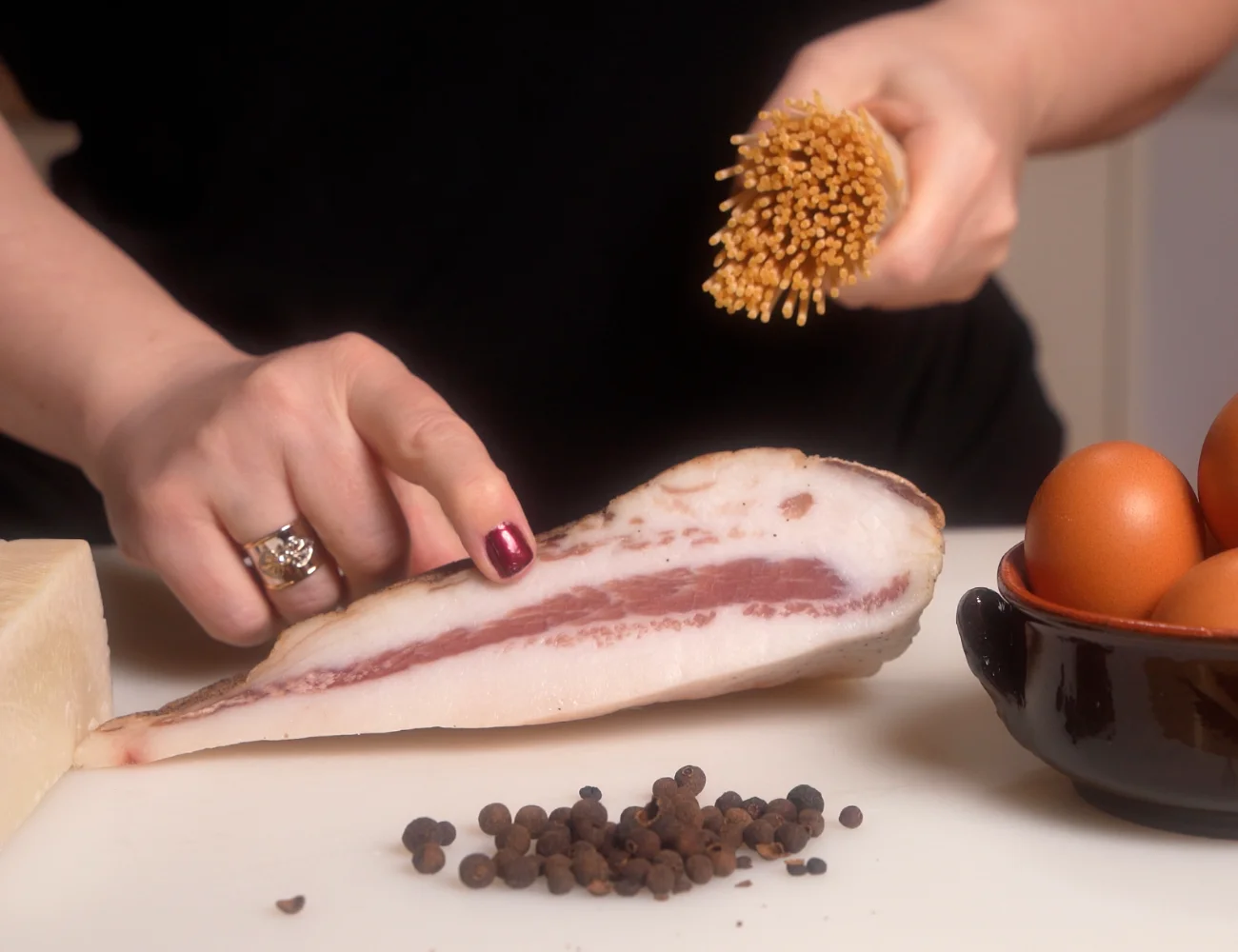

The guanciale can either be cut into strips, then cooked. Or, cut into thick slices and cooked in the pan till soft and tender, then cut into strips and tossed back into the pan till crispy.
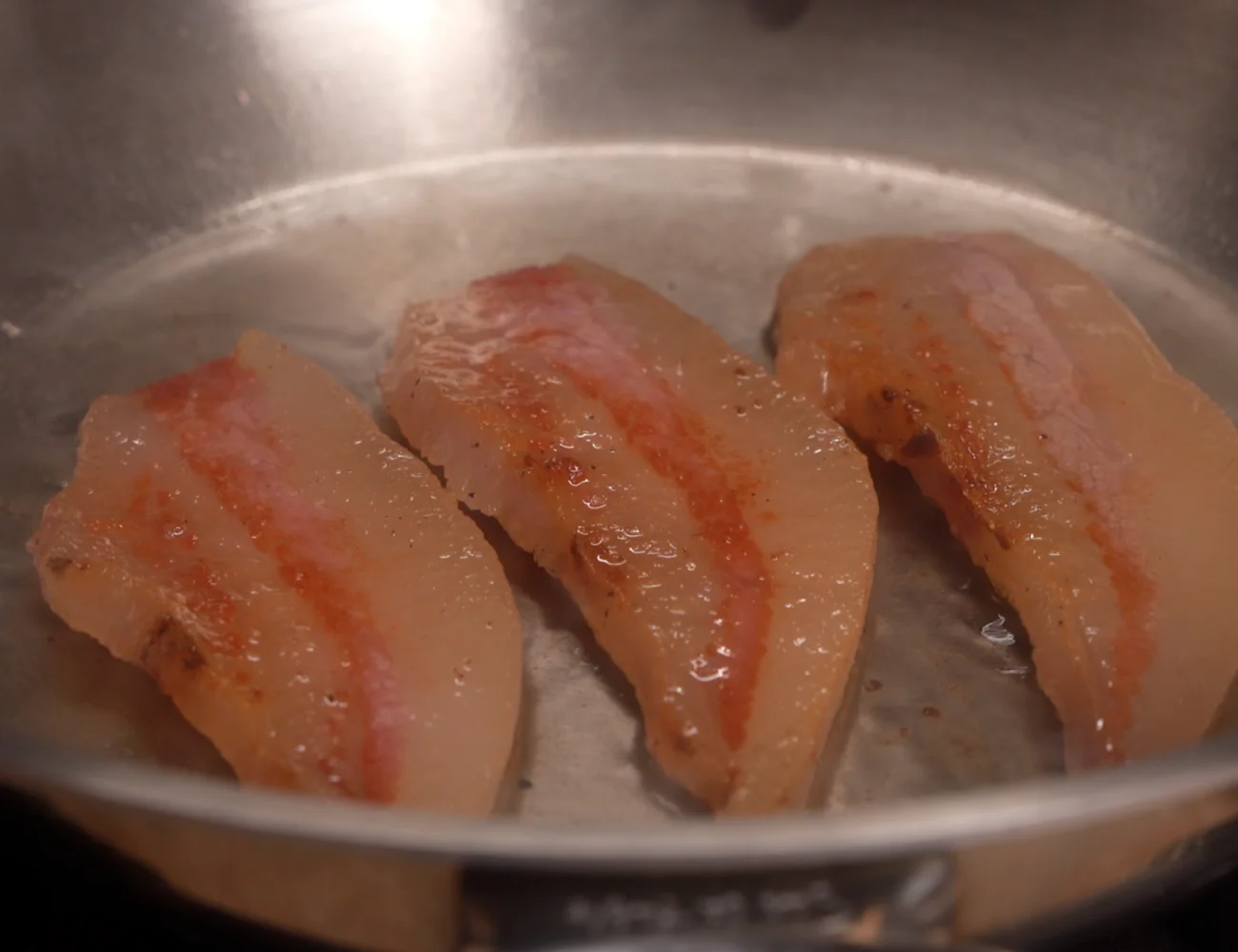

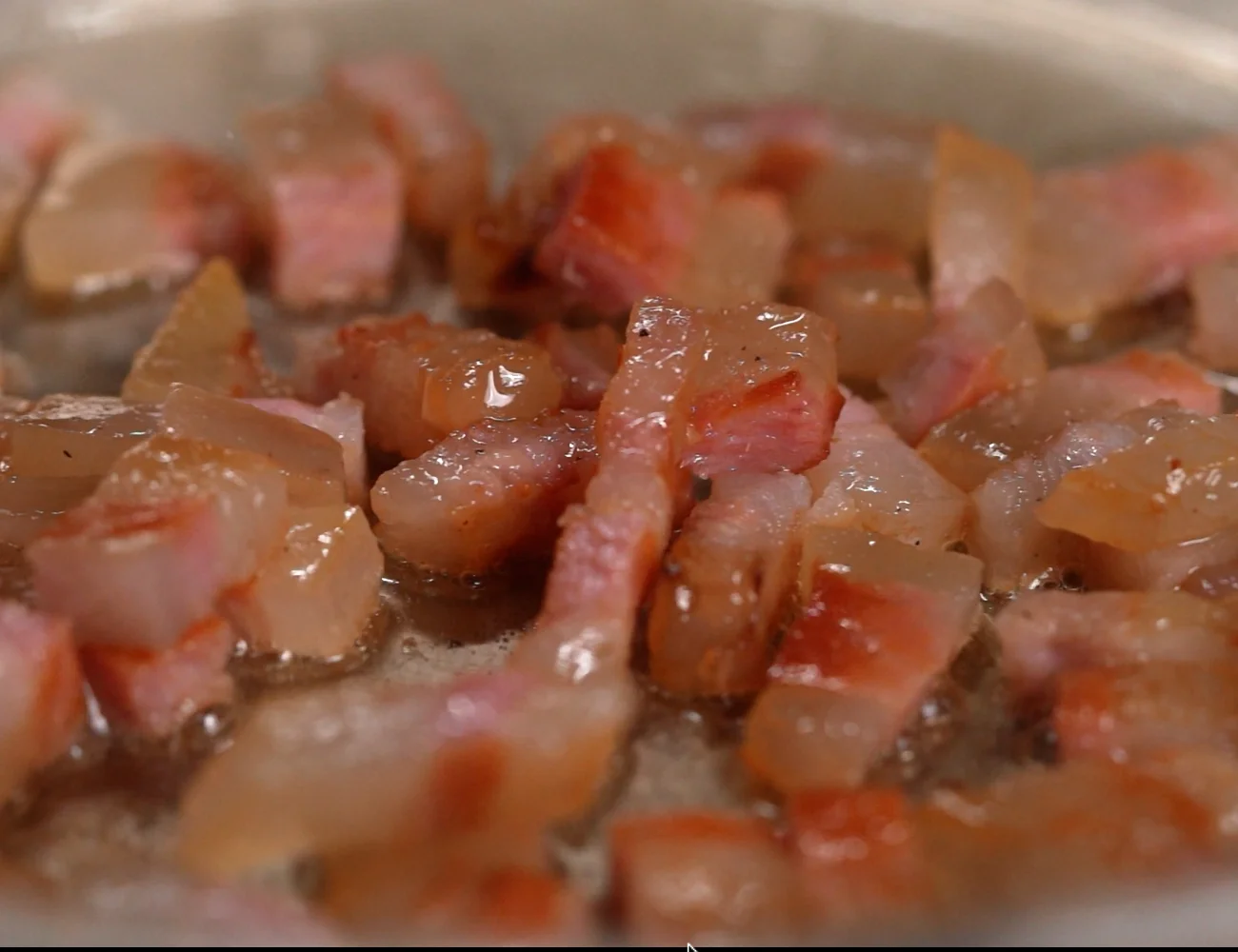

Cooked Carbonara Sauce (Egg Yolks)
Many people would love to enjoy a traditional creamy Spaghetti Carbonara, but are worried about the possibility of it containing raw eggs. We also think food safety should always be a priority. In Italy, it is possible to find ‘pasteurized egg yolk’ in cartons as one can find egg whites in the United States and elsewhere. However, sometimes you don’t have that or can’t find it.
Luckily, it is pretty easy to cook egg yolks to the point of food safety at home—and you can do it right over the boiling pasta! The FDA recommends heating eggs to a temperature of 160° F in order to kill most pathogens (like salmonella) that can cause foodborne illness.
Double Boiler + Thermometer
To cook the carbonara sauce, all you need is a metal bowl that can fit on top of whatever pot you are using to boil your spaghetti. By placing this bowl with the egg yolks over the simmering water in which the pasta is cooking, you have created a DIY double boiler!
We start by drizzling a half ladle of pasta water into our egg yolks and giving them a mix.
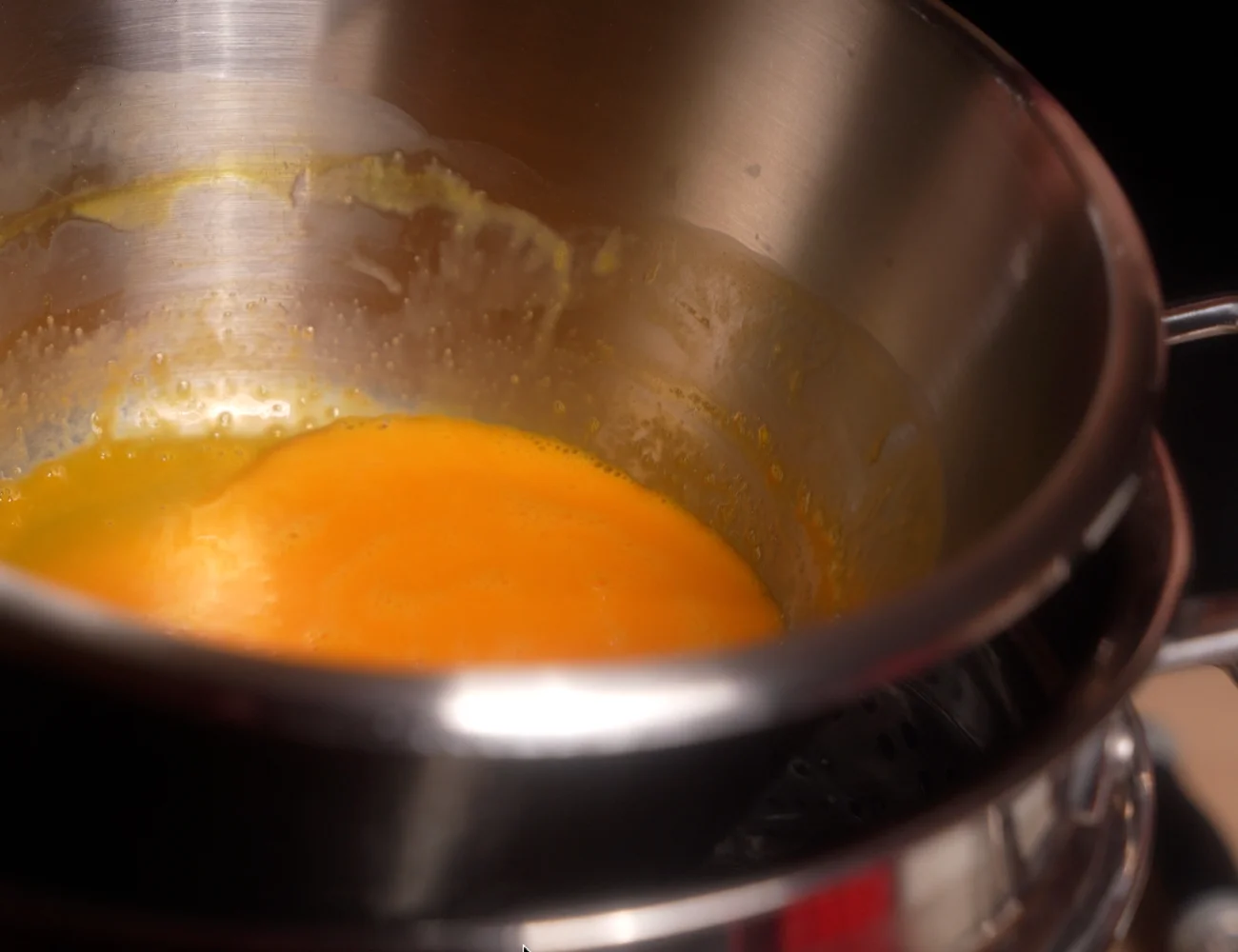

Then, we put the bowl with the egg yolks over the simmering water allowing this indirect heat to heat the egg yolks, whisking continuously. We use a basic digital thermometer to help us keep track of the temperature. We want to heat the egg sauce to 160° – 165° F and hold it at that temperature for about 3 minutes. It’s best to avoid going above 165° for very long or you risk the eggs coagulating.
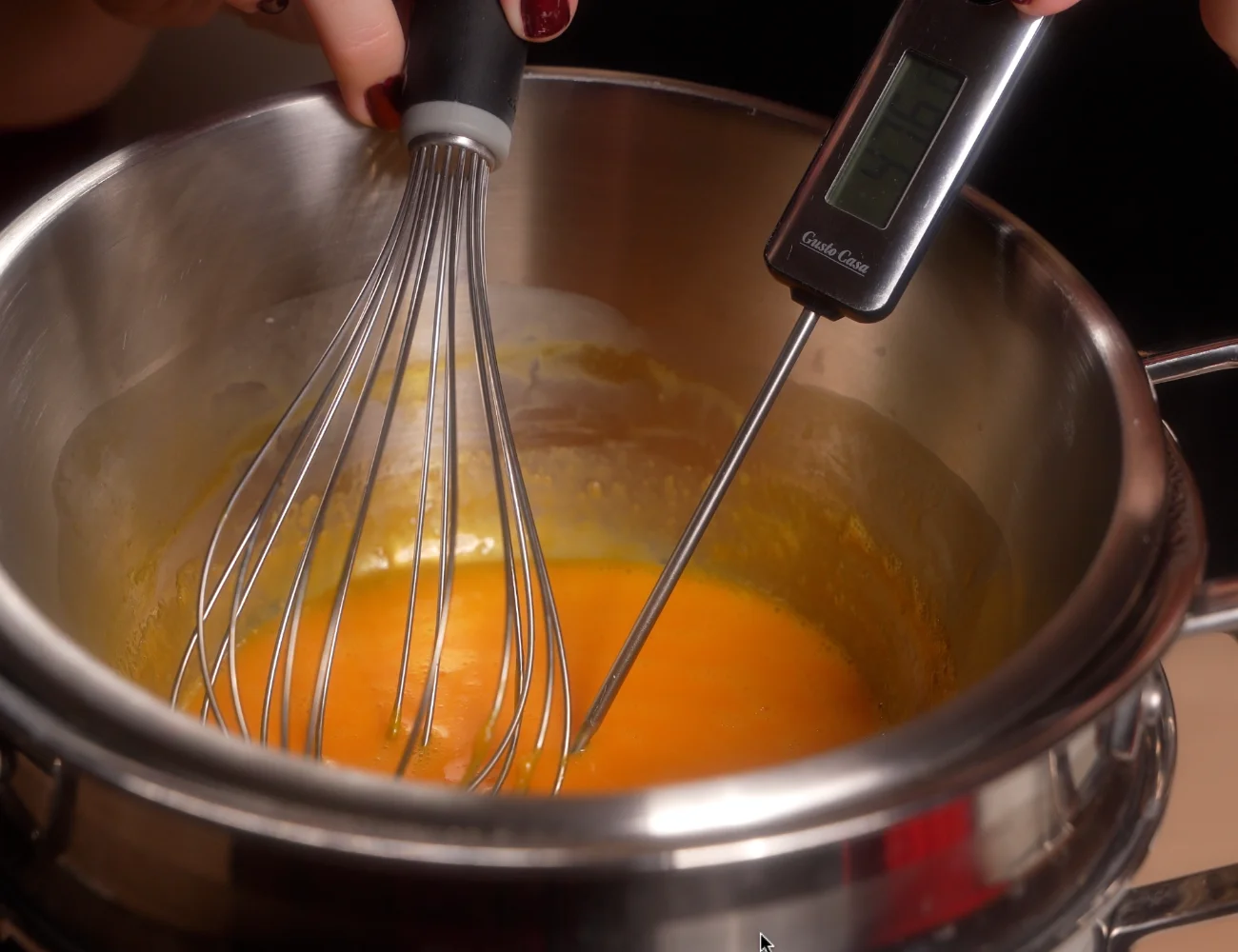

That’s it! Once the eggs have been cooked, you can add the pecorino cheese. We typically strain the egg sauce in order to remove any clumps that may have formed as we cooked it. After all, we are looking for a super creamy Spaghetti Carbonara!
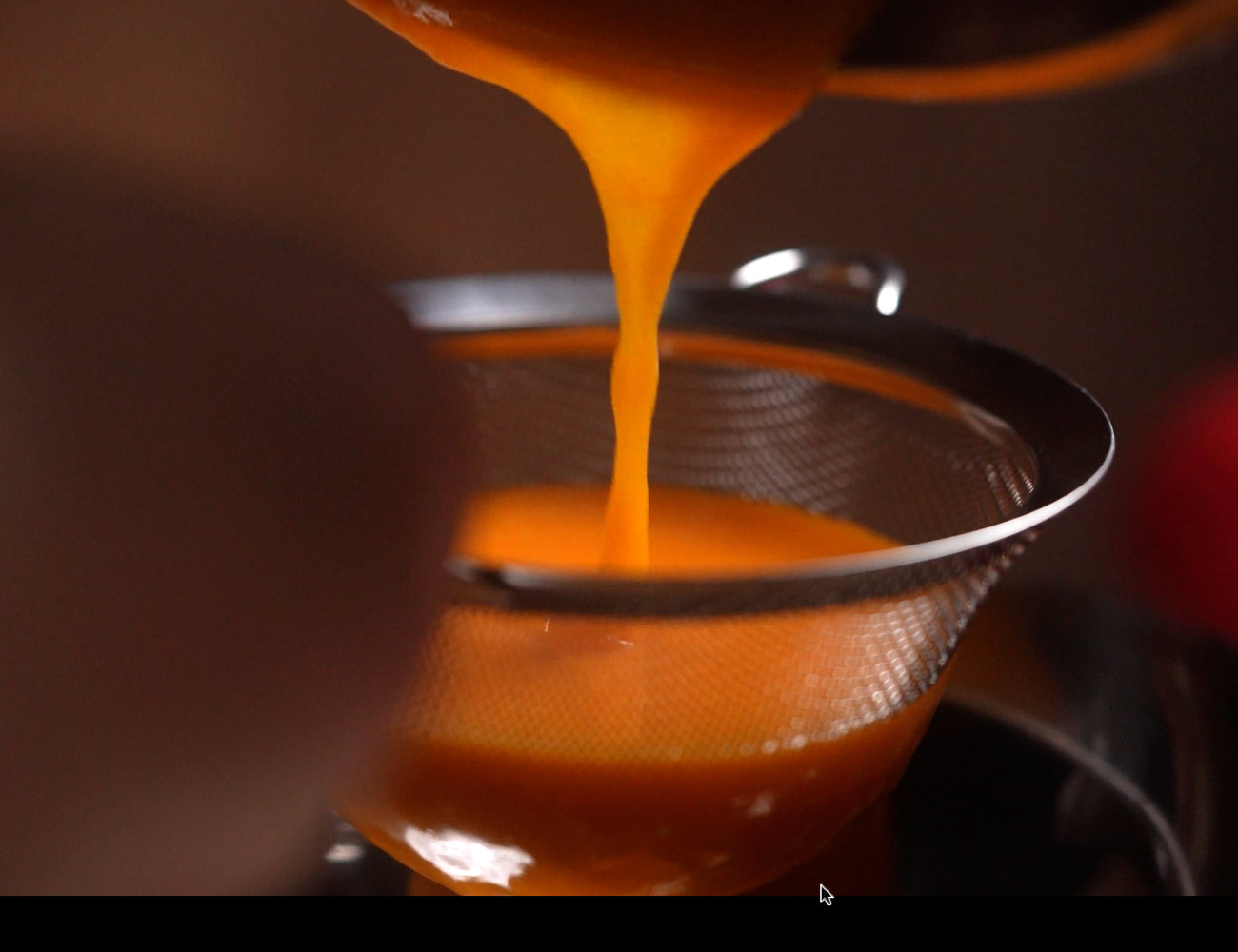

Why a Metal Bowl?
Metal bowls react quickly to heat (either raises or drops in temperature). That means if we need to cool the egg sauce quickly, we can just raise it off the hot water for a minute to get the temperature back to the range we are aiming for.
Spaghetti (Bronze Die Cut)
We often get asked what we think is the best pasta brand in Italy. You can read our post on this topic for a breakdown of our criteria. The bottom line? There are two brands of spaghetti we prefer in Italy which can also (luckily) be found outside of Italy as well (Amazon affiliate links):
► La Molisana Spaghetti: https://amzn.to/3PQfp6o
► Rummo Spaghetti: https://amzn.to/459R3cc
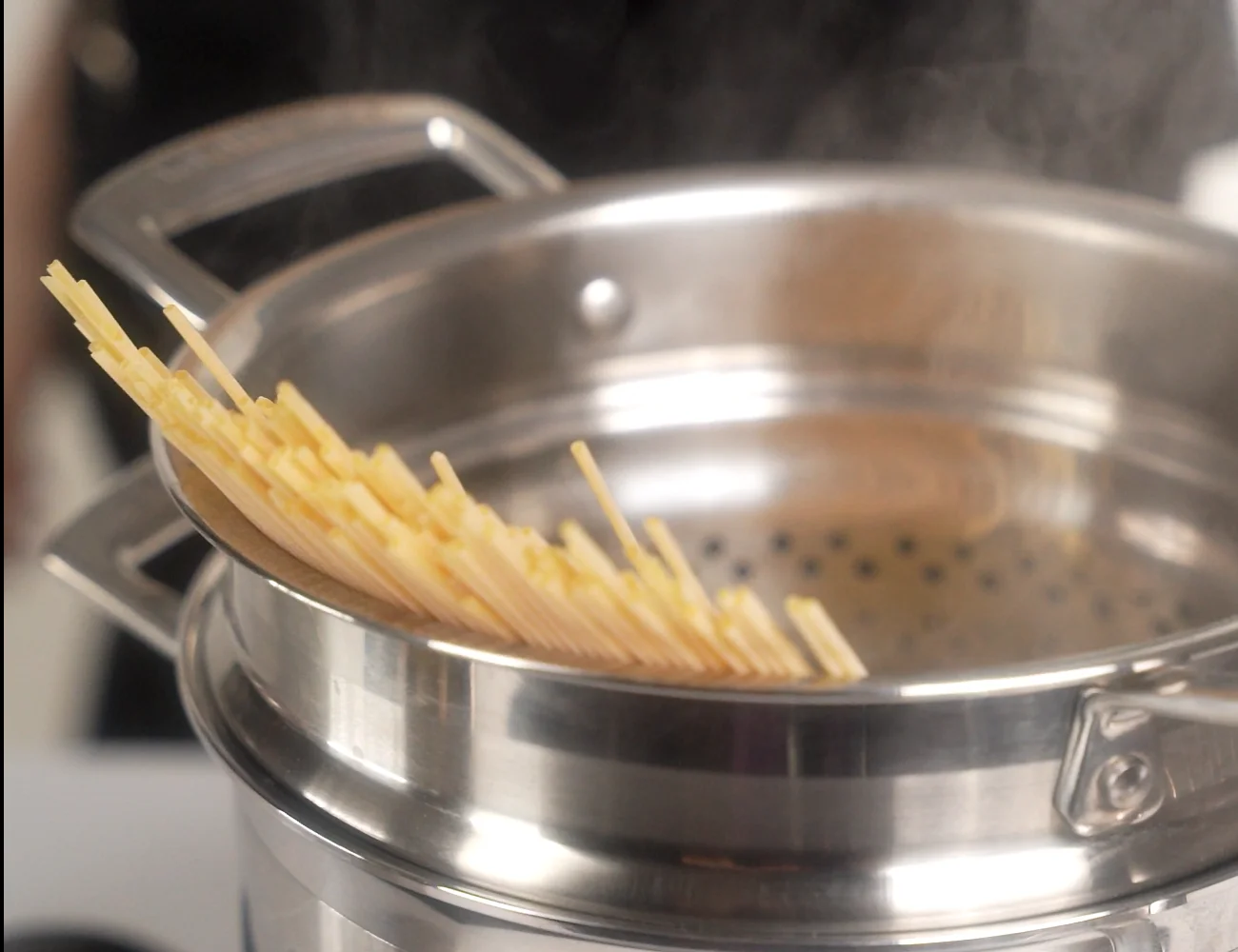

Products and Brands We Use for Making Spaghetti Carbonara
Amazon Affiliate Links:
Our Preferred Pasta
► La Molisana Spaghetti: https://amzn.to/3PQfp6o
► Rummo Spaghetti: https://amzn.to/459R3cc
Cookware and Kitchen Tools
► Le Creuset Pasta Pot: https://amzn.to/3SgYsD3
► Kitchen Thermometer: https://amzn.to/2LIHy0H
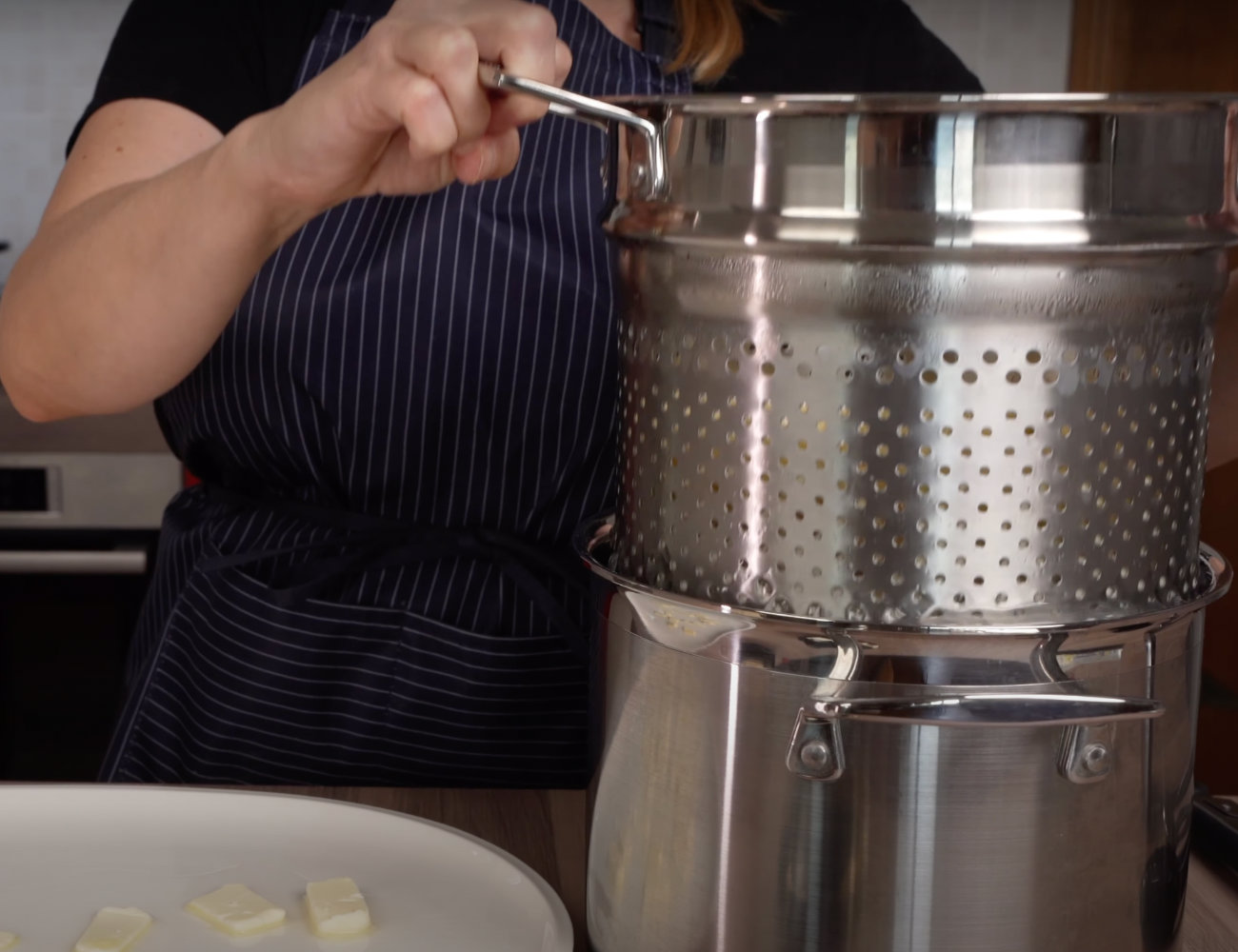

WWII Spaghetti Carbonara with Cream and Bacon?
If the Carbonara recipes that you love have American bacon and cream, you are probably looking for something like the WWII Spaghetti Carbonara recipe! Believe it or not, this recipe is consistent with one of the original stories of Spaghetti Carbonara, though it is not—NOT NOT— the Carbonara recipe considered traditional by Italians in Italy today. Italians do recognize this origin story however.
As an Amazon Associate, we earn from qualifying purchases. This means at no extra cost to you, PIATTO may earn a small commission if you click the links and make a qualifying purchase.
Creamy Spaghetti Carbonara Recipe (Traditional) with Cooked Egg Sauce (No Raw Eggs, No Heavy Cream)
Equipment
- 1 Kitchen Thermometer digital works best
- 1 metal bowl that sits inside the top of another pot for creating a double broiler
- 1 pot for cooking the pasta and creating the bottom of the double broiler
Ingredients
- 1 tbsp black pepper preferably toasted and freshly ground
- 7 oz guanciale
- 3.5 oz pecorino romano cheese very finely ground
- 4 large egg yolks
- 14 oz spaghetti
Instructions
Prepare the Ingredients
- Finely grate the Pecorino Romano cheese if needed. Separate the eggs and put just the egg yolks in a metal bowl for later.

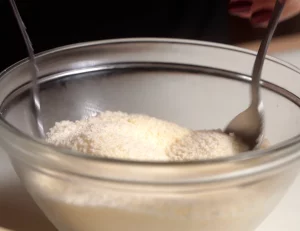
Toast and Grind the Pepper
- Toast whole black peppercorns in a dry pan over medium-low heat until fragrant. Then grind the pepper using a mill or mortar and pestle.1 tbsp black pepper

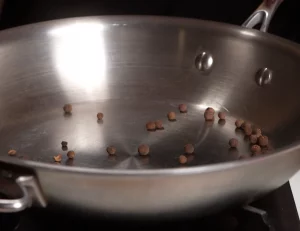
- … Or, crush the black pepper to a medium-coarse grind first, then toast in a dry pan over low heat until fragrant.

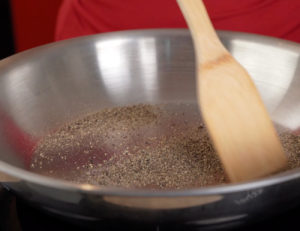
Cook the Pasta ¾ to Al Dente
- Add the spaghetti to lightly salted, boiling water and begin cooking it to ¾ of the cook time recommended for al dente on the package instructions. We will finish cooking the pasta in the pan with the guanciale fat and pepper.In the meantime…14 oz spaghetti
Fry the Guanciale
- Cut the guanciale into strips, or thick slices. Thick slices cook more quickly and evenly, but you'll then need to cut them into smaller strips and pass them back in the pan to finish browning.7 oz guanciale

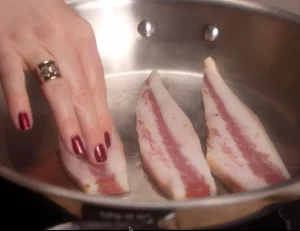
- Guanciale takes about 3 minutes to cook over medium heat in a large skillet or pan.

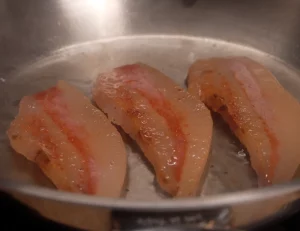
- When the guanciale is browned (crispy on the outside, juicy inside), set the pieces aside in a bowl and leave the grease in the pan.

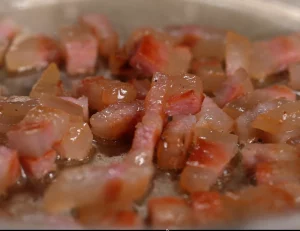
Cook the Egg Sauce
- Drizzle half a ladle of hot pasta water into the egg yolks and whisk well. Create a double broiler by using the hot, simmering pasta water as an indirect heating element for your metal bowl with the egg yolks. Place the metal bowl over the simmering water.4 large egg yolks

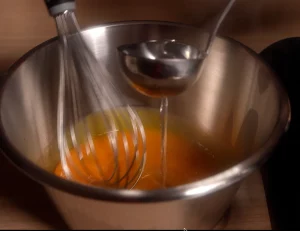
- Whisking continuously and using a kitchen thermometer to control the temperature, bring the eggs to 160° – 165° F and hold it at that temperature for about 3 minutes.If needed, lift the bowl to drop the heat quickly and keep the egg temperature below 170° F—the eggs will begin to coagulate at that temperature and we don't want that.

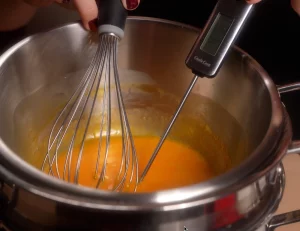
Add the Pecorino to the Egg Sauce
- Add the finely grated pecorino cheese to the cooked egg sauce, whisking thoroughly to create a smooth sauce.3.5 oz pecorino romano cheese

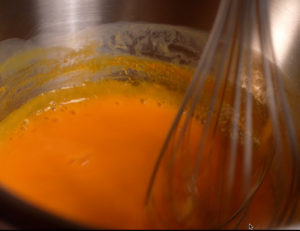
- At this point, you can pass the carbonara sauce through a colander to remove any egg that might have coagulated. This creates the smoothest carbonara sauce, but it is optional.

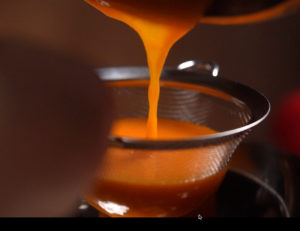
- Add half of the black pepper to the carbonara sauce and…

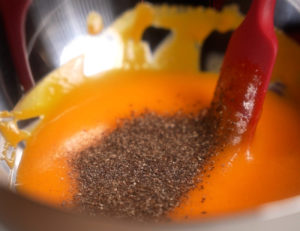
Finish Cooking the Spaghetti in the Pan
- …Add a ladle or two of hot pasta water to the skillet with the guanciale grease, along with the rest of the black pepper.

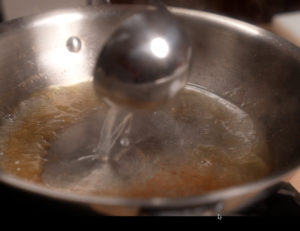
- Transfer the strained pasta ( ¾ cooked) to the skillet. Finish cooking the pasta in the pepper water until it is al dente.

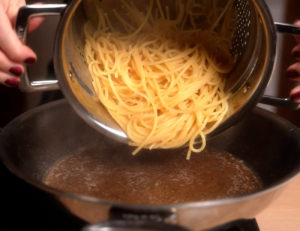
Finish the Spaghetti Carbonara with Sauce
- Once cooked, remove the pasta skillet from the heat. Add the guanciale and carbonara sauce (cheese and egg) and mix thoroughly (and quickly) off the heat.

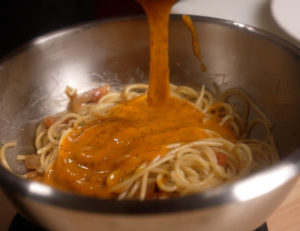
- Remember the egg sauce is already cooked. You just need to mix it with the hot pasta… top with more pecorino cheese and serve!

